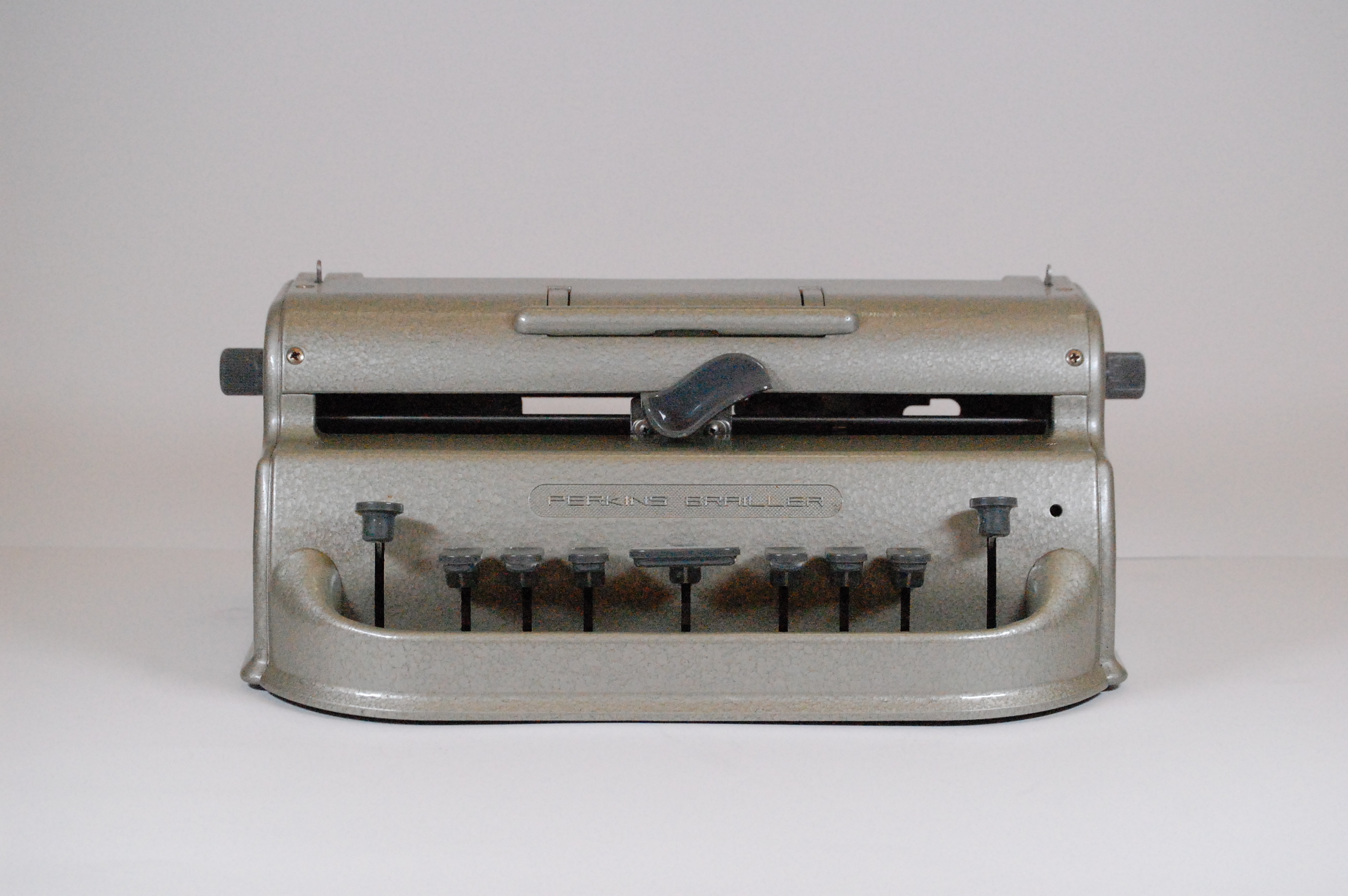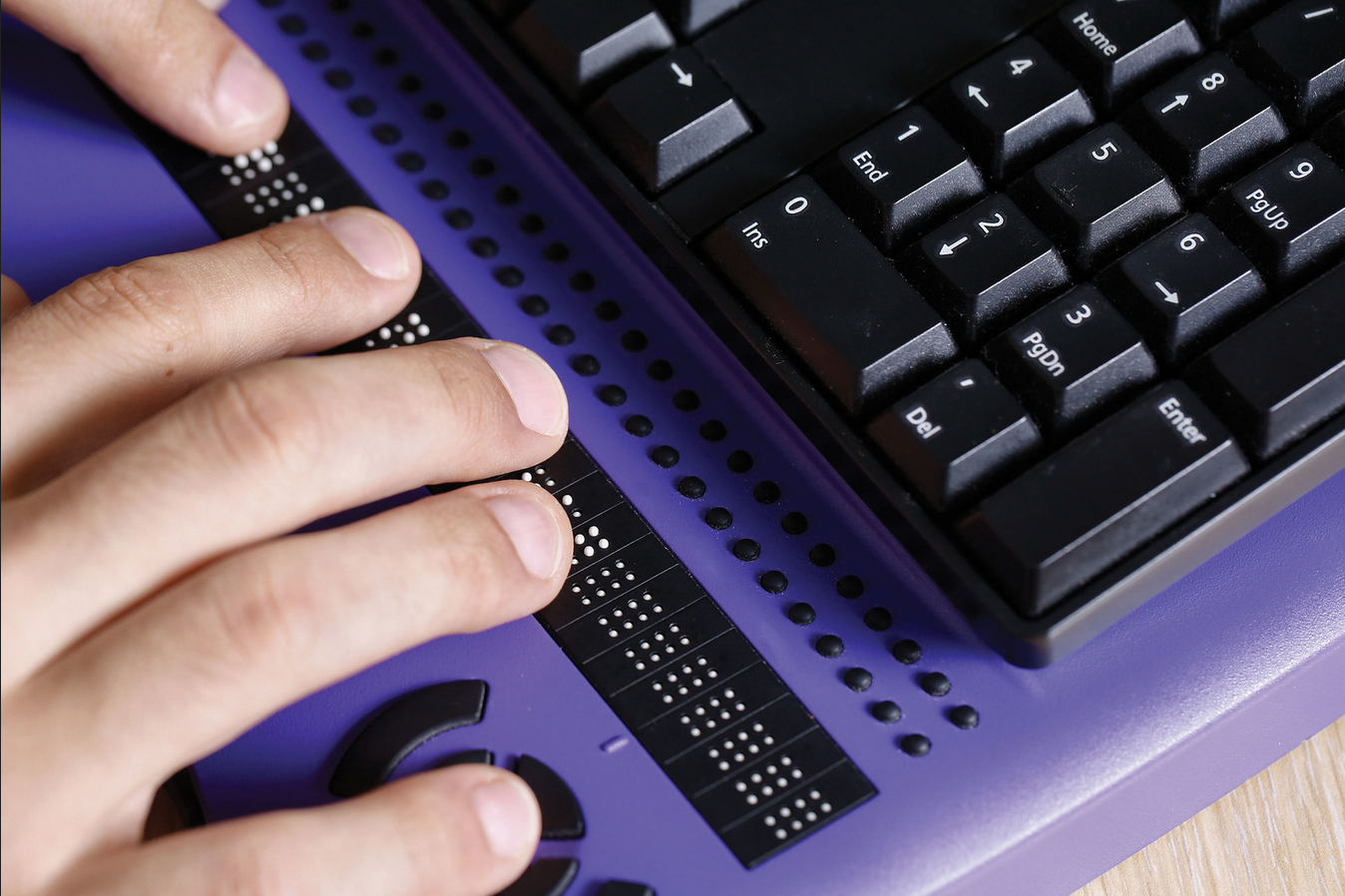Braille keyboards are special kinds of keyboards that allow visually impaired and blind people who rely on braille to communicate to be able to type just as a non-braille user would. Braille keyboards use certain keys to represent each braille dot in a cell.
This article will discuss how to use a braille keyboard, different kinds of braille keyboards, and more.
Using a braille keyboard
To operate a braille keyboard, a user presses a combination of keys to type a braille letter. For example, pressing the keys F, S, and D simultaneously and then releasing them will type a single braille character.
Unlike a standard QWERTY computer keyboard, a braille keyboard uses only nine keys. Eight(F, D, S, J, K, L, A, ; ) are used to type braille letters. A braille keyboard also has a space bar that works like a standard keyboard.
Types of braille keyboards/typewriters
Perkins Brailler
Invented in 1951, the Perkins Brailler is a “Braille typewriter.” It has the same keys as a braille keyboard and includes a backspace key, line spacing key, and return lever. Perkins Braillers are similar to standard typewriters that hold paper and advance the sheets of paper with rollers.

However, Perkins Braillers produce braille dots to create braille documents rather than actual letters.
SMART Brailler
The SMART Brailler is an advanced version of the Perkins Brailler. The SMART Brailler is similar to a braille typewriter but offers multi-sensory features such as visual and auditory feedback. The SMART Brailler can convert braille documents to text and has text-to-speech capabilities to assist document creation.
Orbit Writer
The Orbit Writer is a braille keyboard that is Bluetooth-enabled, meaning it can be used with a tablet or smartphone. It can connec to up to 6 devices, 5 via Bluetooth and 1 via a USB device. The Orbit Writer also supports the Apple Watch. The Orbit Writer features navigation keys that allow users to control their smartphones (or computers) with key combinations, so they don’t have to use touch gestures. It provides haptic feedback to users and its’ small, compact design can easily fit in a purse or pocket.
The Hable One, another Bluetooth-enabled braille keyboard, is fairly similar to the Orbit Writer. However, The Hable One does not support multiple devices. Like the Orbit Writer, the Hable One provides haptic feedback and can be controlled externally rather than requiring touch gestures on users’ phones.
Refreshable Braille Displays
A Refreshable Braille Display (RBD) is a device that displays text as braille when connected to a computer, tablet, etc. RBDs will often come with integrated braille keyboards. RBDs are most commonly used by people who are deafblind.

Consider the example of videos. Deafblind people will likely be unable to see or hear what is happening visually. Assuming there are transcripts of the videos, these users use RBDs to convert the transcripts into braille to “feel” what is happening.
Even screen reader users may prefer RBDs over listening to screen readers, as listening can be time-consuming.
Types of RBD
There are three main types of RBDs.
- Stand-alone Braille Devices. These devices are probably what most people think of when they think of braille keyboards and RBDs. Stand-alone devices produce raised braille dots when plugged in to a computer, etc. and “refresh” when text content changes. Some of these devices come with a braille keyboard, while others are for displaying braille only.
- Notetakers. Portable, connected to the Internet, and commonly used by students for classroom work and test-taking. Notetakers can stream music and videos, read books aloud, and complete other advanced tasks.
- Smart Display Devices. A combination of stand-alone braille devices and notetakers. Smart display devices are portable and compatible with utility functions such as device clocks and calendars. They also work with electronic document readers, and support Bluetooth and USB connectivity. However, smart display devices are not connected to the Internet.
Braille stickers
Standard QWERTY computer keyboards currently do not include braille. Users can put braille stickers on traditional keyboards, though. Braille stickers are labels with braille lettering. They can be helpful in learning which braille dots correspond to which keys.
Questions about braille?
If you have any questions about braille, please don’t hesitate to contact us. Our team of experienced members can assist you with any queries. Although braille is not as commonly used nowadays due to technological advancements, it is still a valuable skill, especially for individuals with vision impairments.

